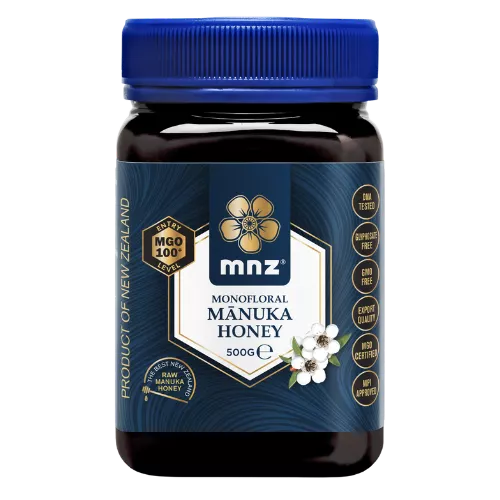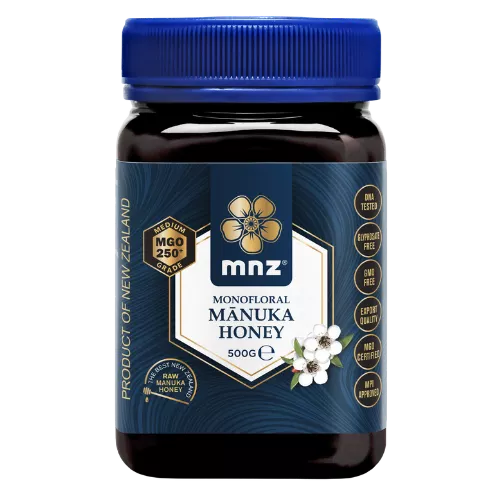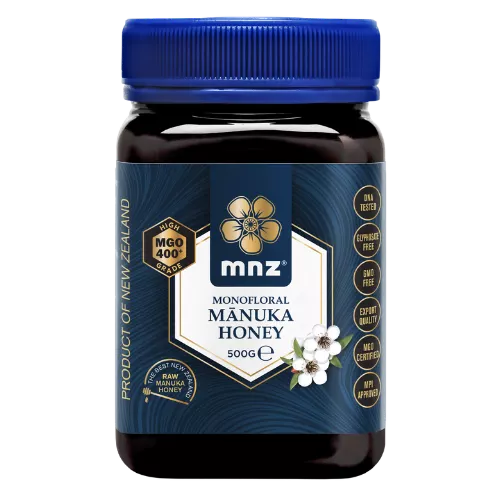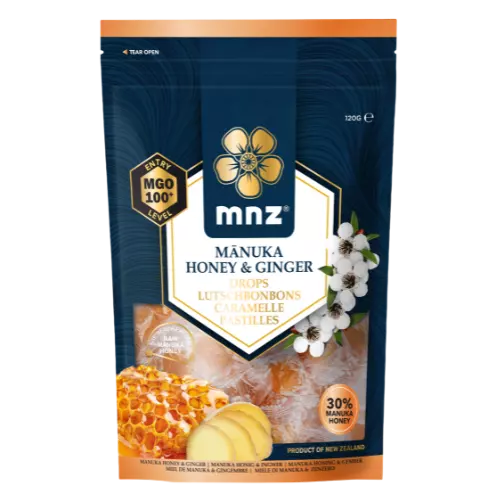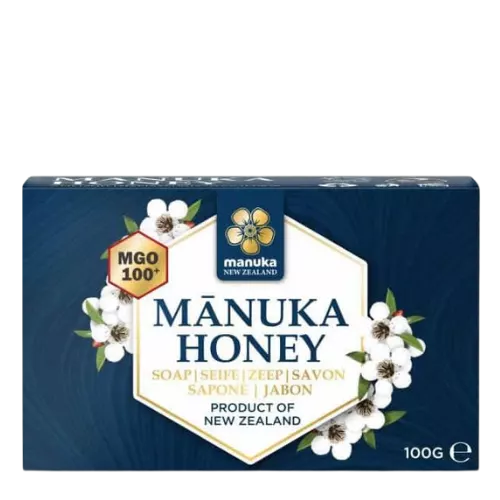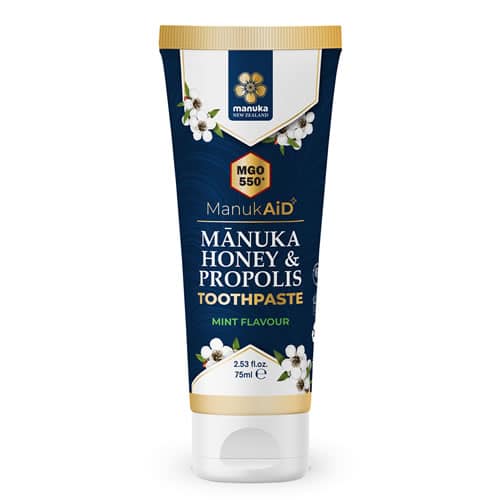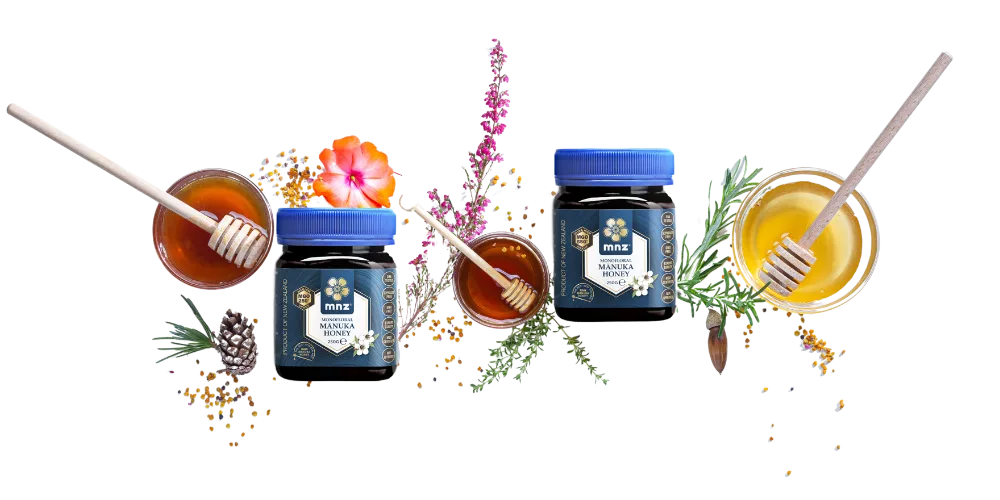What is Manuka honey?
Manuka honey, sourced from the Leptospermum Scoparium or the Manuka tree, holds a special place in the world of honey due to its extensively researched and recognized unique, high-quality, natural bioactivity. This exceptional type of honey has garnered attention from leading universities globally, making it the first honey to be studied so thoroughly for its distinctive properties. The rarity of Manuka honey is due to its limited production period, as it is only harvested for a few weeks each year when the Manuka tree blossoms. It’s during this brief flowering period that the bees collect nectar from the Manuka flowers, giving rise to honey that possesses a unique combination of the age-old benefits of honey and the potent properties of the New Zealand Manuka tree. What truly sets Manuka honey apart is the synergy between its complex composition and the unparalleled New Zealand environment. New Zealand’s pristine natural ecosystems, coupled with its clean waters, pure air, and diverse climatic conditions, contribute to the growth of robust and resilient plants and trees, including the native Manuka tree. These environmental factors play a crucial role in the development of the Manuka tree, enabling it to produce the special natural compounds that are integral to the unique qualities of Manuka honey. In essence, Manuka honey’s distinctiveness and richness are a direct reflection of New Zealand’s unique location and its natural, unspoiled environment. This synergy results in Manuka honey being one of the most sought-after and prized honeys in the world, valued not just for its taste but also for its remarkable natural properties.
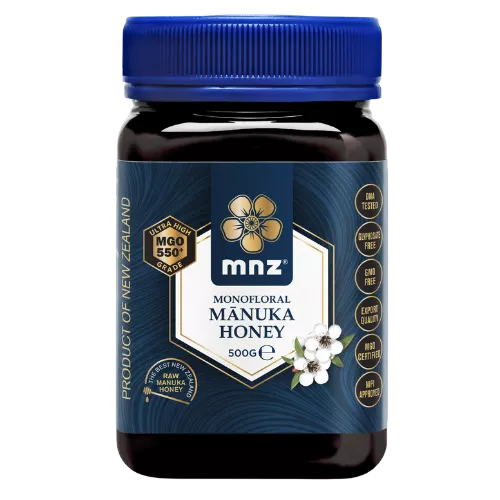
Who is it for, who can use it?
New Zealand Manuka Honey stands out as the only 100% natural food globally that has been scientifically proven to possess a unique, high-quality, and natural bioactivity. This distinctive characteristic has earned it a reputation as one of the most unique foods in the world, making it suitable for consumption by individuals aged one year and older.
One of the notable aspects of Manuka Honey is its moderate glycemic index, which ranges between 54 and 59. This feature is particularly beneficial for diabetics, as it allows them to enjoy Manuka Honey while carefully managing their blood sugar levels. Its moderate glycemic index means that it does not cause rapid spikes in blood sugar, making it a safer option in comparison to foods with higher glycemic indices.
Furthermore, the versatility of Manuka Honey extends beyond human consumption; it is also suitable for animals. This makes it a valuable addition to various dietary regimens, catering not only to the nutritional needs of people but also to those of animals.
In summary, New Zealand Manuka Honey’s scientifically backed bioactive properties, along with its suitability for a wide range of consumers, from young children to diabetics and even animals, underscore its uniqueness and versatility as a natural food product.
Why raw manuka honey?
Raw Manuka Honey truly embodies the essence of nature’s intent. It represents Manuka Honey in its purest form, remaining unaltered by processing, pasteurization, or heat treatment. This commitment to maintaining its natural state preserves several key characteristics that distinguish raw Manuka Honey:
Preservation of Nutrients; Raw Manuka Honey retains its vitamins, minerals, and nutrients just as nature intended. This means that the beneficial compounds naturally found in honey remain intact, offering potential health benefits to those who consume it.
Higher Natural Enzyme Content; Raw honey, including Manuka Honey, boasts a higher natural enzyme content compared to processed honey. These enzymes can contribute to the honey’s bioactivity and potential health-promoting properties.
Elevated Amino Acid Profile; Amino acids are the building blocks of proteins and play essential roles in various bodily functions. Raw Manuka Honey contains an elevated amino acid profile, which can be valuable for those seeking a nutrient-rich natural sweetener.
Thicker Consistency; Raw honey, including raw Manuka Honey, typically has a thicker consistency compared to processed honey. This texture adds to its unique character and makes it a popular choice for various culinary applications.
Slightly Grainy Texture; The grainy texture of raw honey is a natural occurrence and is not indicative of spoilage. It adds an interesting element to the honey’s sensory experience, distinguishing it from smoother honey varieties.
Incredible Aromas and Natural Flavor Profile; Raw Manuka Honey is known for its captivating aromas and authentic, natural flavor profile. These sensory attributes are appreciated by those who enjoy its unique taste.
In summary, raw Manuka Honey is a testament to preserving the inherent qualities of this exceptional honey variety. Its natural state ensures that it remains a source of potential health benefits and a culinary delight for those who savor its distinctive characteristics.
Read more about the difference between raw and creamed honey.


